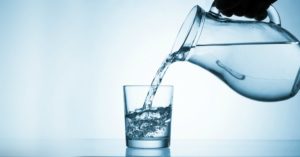Drinking Water Treatment
ECHIP Ozone drinking water solutions :
Ozone has been used in drinking water plants since 1906 where the first industrial ozonation plant was built in Nice, France. Water in its natural form is contaminated with a varying degree of organic materials, chemicals, metals, micor-organisms and other hazardous substances. It has to to be treated nonetheless.
The use of ozone is often the only and most effective technology for providing high-quality drinking water. Thanks to the environmentally- friendly way in which it works, is ideally suited for sustainable water treatment. As one of the most powerful commercially available oxidants, it addresses other water quality issues apart from disinfection, which are difficult or impossible to treat with other methods.
WHO estimates that, in India, about 38 million people are affected by waterborne diseases each year, of which over 75% are children; 780,000 deaths are attributable to contaminated water and more than 400,000 can be attributed to diarrhea alone. India ranks a dismal low 120th out of 122 nations for its water quality and 133rd out of 180 nations for its water availability. Keeping in mind the above points; following problems are commonly faced by our current drinking water facilities:
a. Traces of inorganic contaminants(As, Cr, Mn, Fe, etc)
b. DBP formation due to Chlorine (THM, HAA, etc)
c. Traces of organic contaminants
d. Endocrine disruptors ( DDT, Oxybenzone, Atrazine, etc)
e. Tastes and odours
f. Improper Disinfection( Presence of E. Coli, Cryptosporidium, Salmonella, Streptococci etc)
g. Color
Oxidation
- COD/TOC
- Increased DO so that no anaerobic condition is generated
- Fe/Mn
- Hydrogen Sulfide
- Taste and Odor
- Color
- Specific Chemicals (Endocrine Disruptors etc)
Disinfection
- Bacteria (The subsequent inability to divide and form colonies.)
- Virus (The inability of the microorganism to form plaques in host cell.)
- Parasites (The inability to replicate.)
Effect on Flocculation
- Less chemical coagulant
- Lower solids handling
- Lower turbidity and particles
- Longer Run Time
- Less Backwashing
Pre-Treatment using Ozone does the following
- Remove pathogens thus reducing challenges at final disinfection especially Cryptosporidium which is highly resistant to chlorination
- Make the water more responsive to final disinfection by reducing chlorine demand and removing constituents of TOC- turbidity, color, DOC, endocrine disruptors.
- Reduce the probability of THM by-product formation by removing precursors to its formation in the initial stage itself.
- Longer Run Time
- Less Backwashing
How Ozone is essential in drinking water application ?
• Disinfection, i.e. killing of most microorganisms – bacteria, virus inactivation, elimination of crytosporidia.
• Complete removal of odors, colors, toxic substances and bad tastes.
• Oxidation of metals & non-metals such as iron maganese, hydrogen sulpide, arsenic and all organic matter.
• Degeradation of pesticides, pharmaceutical and other contaminants.
Benefits :
• No harmful Tri-Halo-Methanes formation.
• No environmental or health-endangering harmchlorinated by-products.
• Low ozone doses are sufficient, faster in disinfection than conventional methods.
• Ozone is produced according to needs at the place of consumption from power and oxgen/air. Ozone disintegrates or is broken down into oxygen after the reaction.
• Ozone does not negatively impact the water’s taste and smell.

